In the world of healthy eating, avocados have hit superstar status in the last few years. They have always been popular in guacamole and other Tex-Mex dishes, but they are now getting lots of attention for their versatility in the kitchen and for their rich supply of healthy nutrients. And avocado lovers are discovering delicious new ways to enjoy them—for breakfast, lunch, dinner and even snack time.
Avocados are fruit (technically berries) that grow on trees, which are native to Mexico and now are raised in warm climates like California and Florida. Avocados have a thick, inedible skin and a single large pit (or seed) in the center. When fully ripe, the light green flesh inside is mild-flavored and has a creamy texture. It blends well with other ingredients and can be used as a healthier substitute for foods that are high in unhealthy saturated fats.
If you’re an avocado fan already, you’re about to get a lot of good news about why you should keep eating them and fresh ideas for doing just that. Haven’t tried avocados yet? We’ll give you the skinny on why and how to find a dish that fits your tastes.
Nutrition Highlights
 One-eighth of an avocado, according to the United States Department of Agriculture (USDA), comes with 40 calories, 2.1 grams of carbohydrates, 1.7 grams of fiber, and 3.7 grams of fat. Avocados are high in mono-unsaturated and polyunsaturated fats, which are associated with lower levels of bad (LDL) cholesterol and triglycerides in our bodies, as compared to saturated and trans fats.
One-eighth of an avocado, according to the United States Department of Agriculture (USDA), comes with 40 calories, 2.1 grams of carbohydrates, 1.7 grams of fiber, and 3.7 grams of fat. Avocados are high in mono-unsaturated and polyunsaturated fats, which are associated with lower levels of bad (LDL) cholesterol and triglycerides in our bodies, as compared to saturated and trans fats.
Yes, all fats are high in calories, so you want to be aware of portion size when eating avocados. That’s why they are listed as an “Extra” in the Nutrisystem Grocery Guide. But using avocados in place of saturated or trans fats is a healthy choice.
According to Harvard Health, avocados also deliver other potent nutrients to you, most notably potassium. One serving of avocado (one tablespoon of the whole fruit) contains 122 milligrams of the mineral—more than in a comparable serving size of banana. Potassium plays a crucial role in regulating your heartbeat and blood pressure. And it helps to keep your body’s sodium levels in balance. Avocados’ high fiber content also helps you feel full after eating and ensures healthy digestion of the foods you consume.
Health Powers
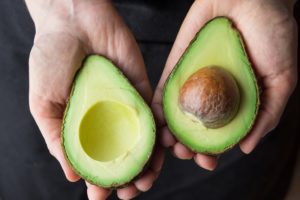 Avocados have earned their reputation as “superfoods” mostly because of their mono-unsaturated and polyunsaturated fats. These kinds of healthy fats are essential when you’re trying to eat well and lose weight. Your body needs fats to help you feel full after eating, to provide quick-burning energy, and to aid in absorbing the vitamins and minerals in the foods you eat. But not all fats are created equal. Avocados are an excellent “whole food” source of healthy fats, meaning you also get valuable fiber, vitamins and other vital nutrients when you eat them, which you don’t get with many other kinds of fats.
Avocados have earned their reputation as “superfoods” mostly because of their mono-unsaturated and polyunsaturated fats. These kinds of healthy fats are essential when you’re trying to eat well and lose weight. Your body needs fats to help you feel full after eating, to provide quick-burning energy, and to aid in absorbing the vitamins and minerals in the foods you eat. But not all fats are created equal. Avocados are an excellent “whole food” source of healthy fats, meaning you also get valuable fiber, vitamins and other vital nutrients when you eat them, which you don’t get with many other kinds of fats.
Nutrition researchers have found that avocado consumption is associated with eating healthier, better cholesterol readings, and even slimmer waistlines. People who regularly eat avocados have significantly lower body weight, BMI (body mass index), and waist circumference, and higher HDL (good cholesterol levels) than people who don’t eat the fruit, according to a study published in Nutrition Journal. What’s more, the researchers found that avocado eaters are 50 percent less likely to suffer from metabolic syndrome, the conditions that often lead to diabetes. The researchers state that eating avocados is “associated with better diet quality and nutrient intake,” meaning that adding them to your meals leads to eating better overall.
Buyer’s Guide
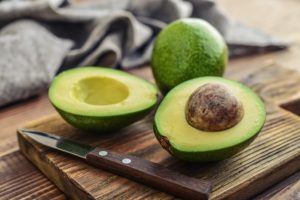 You may see different kinds of avocados in the produce department of the grocery store, but the most popular and widely sold variety in most of the U.S. is called Hass. Its skin is bumpy, and dark green to purplish back, depending on the ripeness. The flesh inside is pale green and exceptionally creamy.
You may see different kinds of avocados in the produce department of the grocery store, but the most popular and widely sold variety in most of the U.S. is called Hass. Its skin is bumpy, and dark green to purplish back, depending on the ripeness. The flesh inside is pale green and exceptionally creamy.
No matter the variety, the only question when choosing an avocado is when you plan to eat it. If you’re ready to include avocado in your meals within a day or so of buying it, look for one with very dark skin and flesh that gives a little when you squeeze with your fingers. Beware of any avocado that is already shriveling or mushy.
You can you can buy avocados when they’re still green and hard, but they’ll need a few days to darken and soften up. Don’t put them in the refrigerator—leave them at room temperature. They’ll ripen a little faster if you set them next to a bunch of bananas. Give them the squeeze test every day until they soften a little, then eat them within a day or two after that.
Many supermarkets offer pre-packaged guacamole. Dipping is a fun way to enjoy the benefits of avocados, but be aware that these products can come with added saturated fats that you want to avoid. You can make your own guacamole in minutes by mixing mashed avocado with your favorite salsa (a Free food on the Nutrisystem Grocery Guide) and a squeeze of lemon or lime juice (also a Free food).
Fresh Ideas
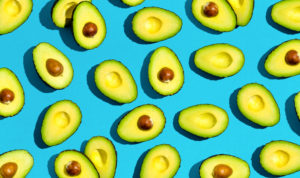 When you slice an avocado in half, you’ll hit the large brown seed inside with your knife. Cut open the skin and flesh around the hard-coated seed rather than trying to hack through it. Once have the avocado open, you can pull the seed loose with your fingers, but this video shows you a simpler and safe way to remove it and scoop the flesh out of the skin >
When you slice an avocado in half, you’ll hit the large brown seed inside with your knife. Cut open the skin and flesh around the hard-coated seed rather than trying to hack through it. Once have the avocado open, you can pull the seed loose with your fingers, but this video shows you a simpler and safe way to remove it and scoop the flesh out of the skin >
Since you’ll be eating only a portion of an avocado at a time, you’ll often be storing the leftovers for another meal. To keep the flesh bright green and at its peak of flavor, we’ve come up with a simple kitchen hack that protects it from spoiling. This quick video shows you how to preserve fresh avocado so you have it on hand to eat it when you’re ready >
Healthy eaters have found lots of delicious ways to use the mild-flavor and creamy texture of avocados to make many dishes better. If you like to make smoothies that are as thick and creamy as a milkshake, for instance, you can add avocados to the blend. Toss a few slices of avocado in a salad and skip the high-fat dressing. Hold the mayonnaise on a turkey sandwich and instead mash a little avocado and spread it on the bread.
Here are a few more tasty ideas for enjoying nutrient-dense avocados:
1. 3 Avocado Toast Recipes >
Avocado toast has become a go-to breakfast or lunch for many people. After mashing the avocado onto whole grain bread, you can add a wide variety of other toppings, such as cucumbers or cherry tomatoes. To get you started we collected three of our favorite combos >
2. Avocado Pesto Panini >
If you’d like a Flex meal that’s loaded with protein and fiber, try this hot and hearty sandwich. It has just six ingredients and is simple to make in a panini maker or even your stove top. Check out this simple recipe >
3. Skinny Avocado and Egg Salad Sandwich >
Do you love the rich, gooey goodness of egg salad? Our version is perfect for a filling Flex lunch that’s high in healthy fats and loaded with flavor. Whip up this skinny recipe for lunch >
4. Mahi-Mahi With Blood Orange, Avocado and Salsa >
Firm, mild-flavored mahi-mahi makes a healthy dinner with a tasty topping of tart citrus fruit, spicy salsa and creamy cubes of avocado. You can try this with just about any type of fish that you like. Get the delicious recipe here >
Want to add another superfood to your weekly menu? Check out Why Eggs Are So Egg-Cellent >
The post Superfood Saturday: All About Avocados appeared first on The Leaf.
from The Leaf https://ift.tt/2tXDFsh
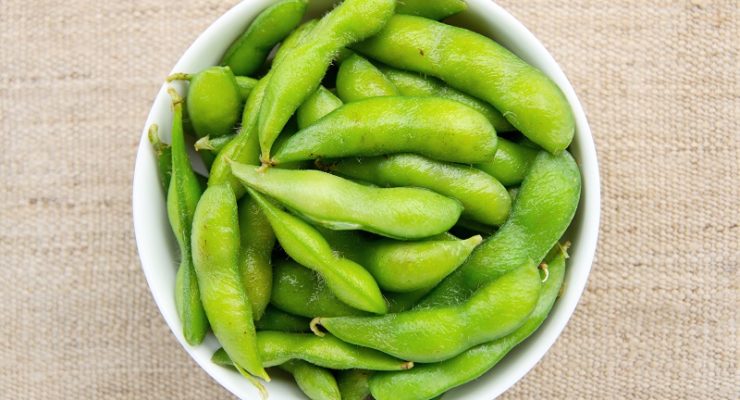

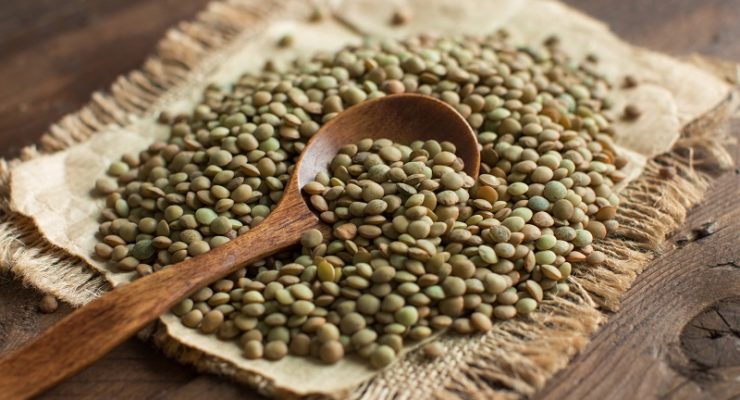
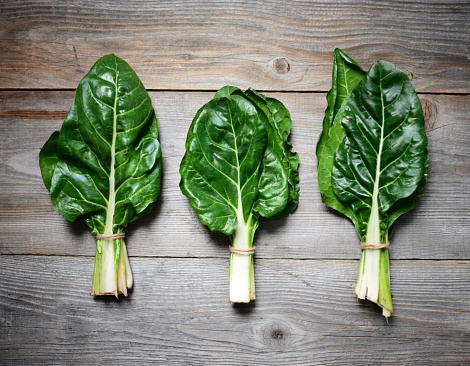




No comments:
Post a Comment